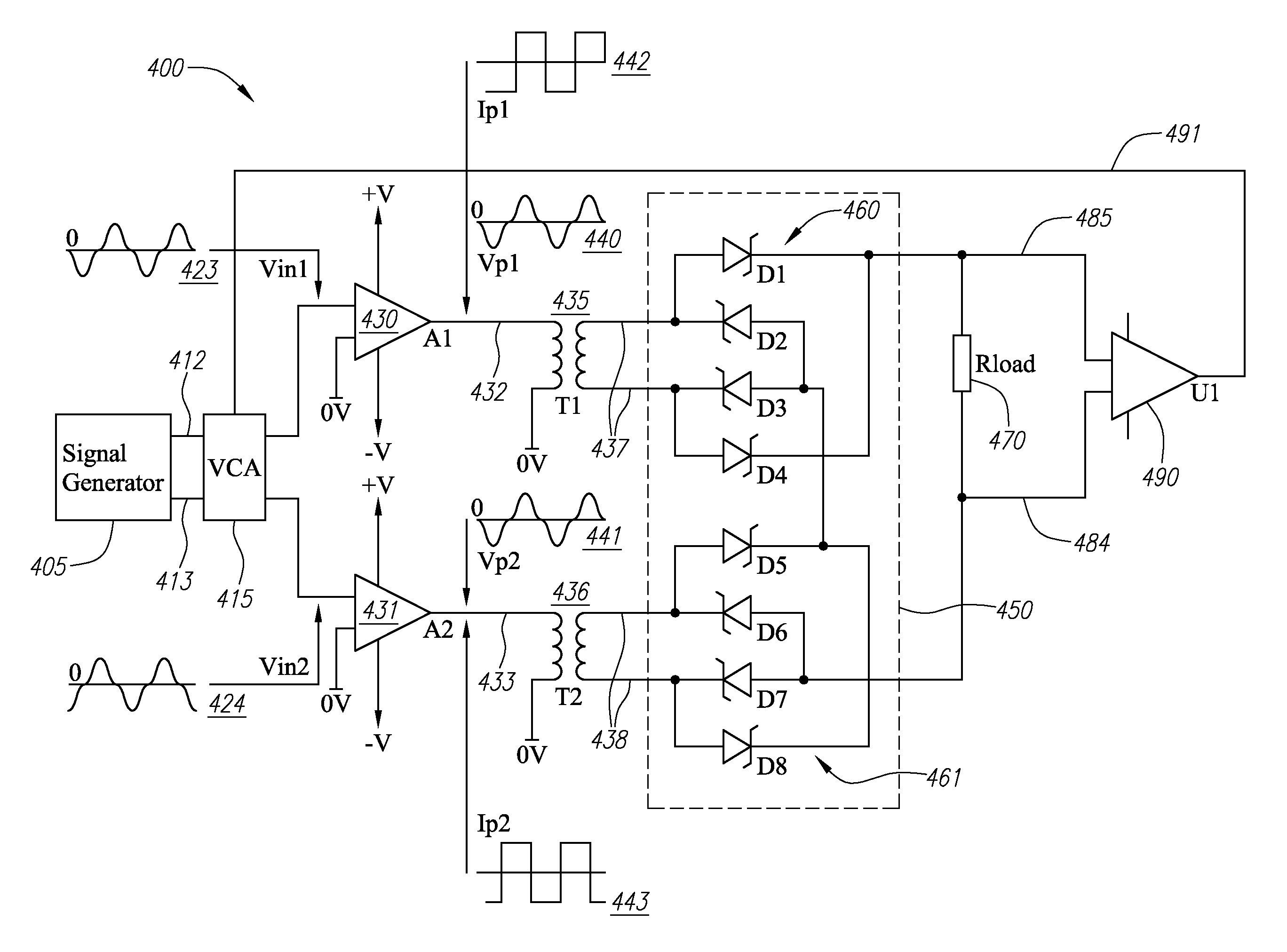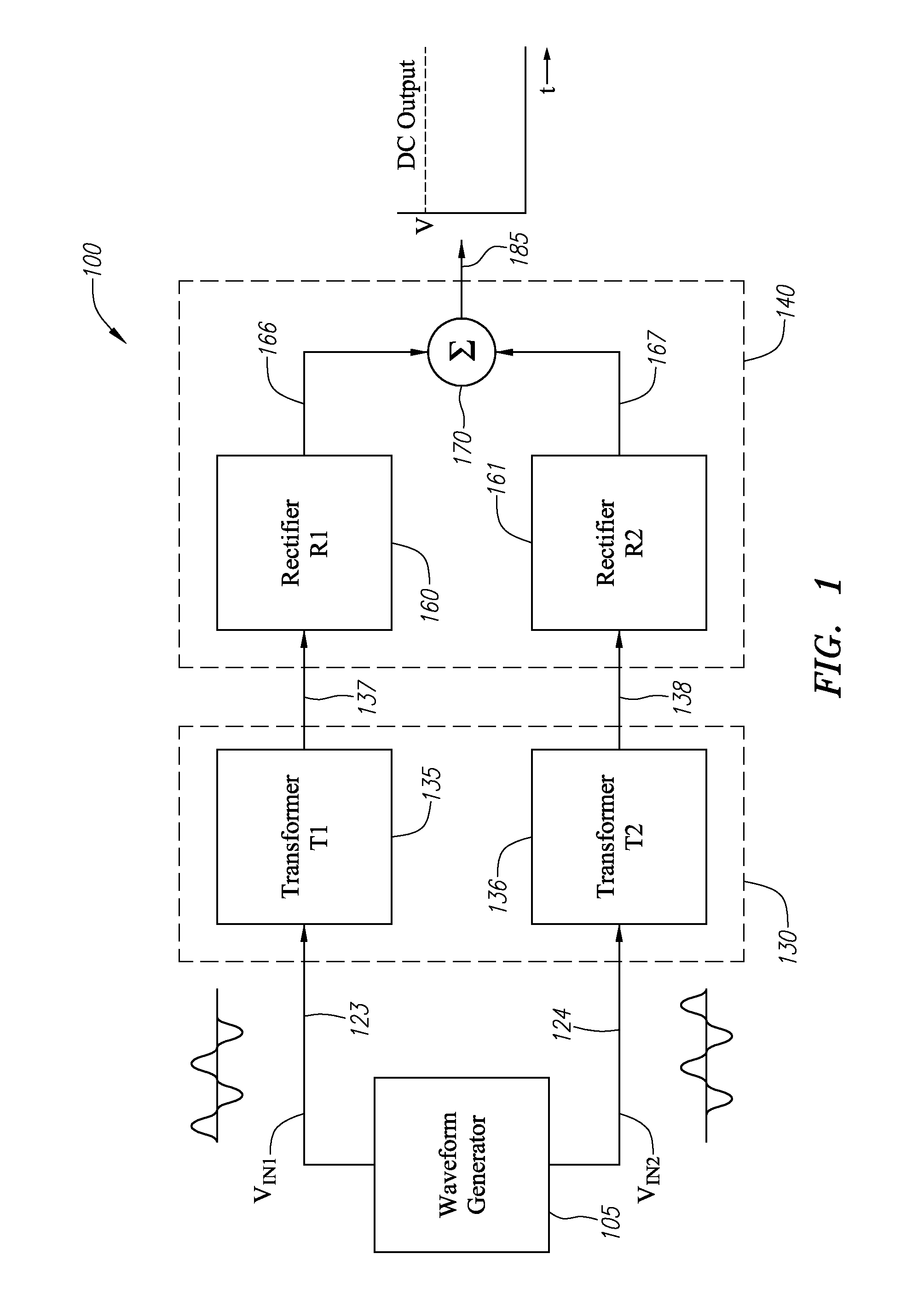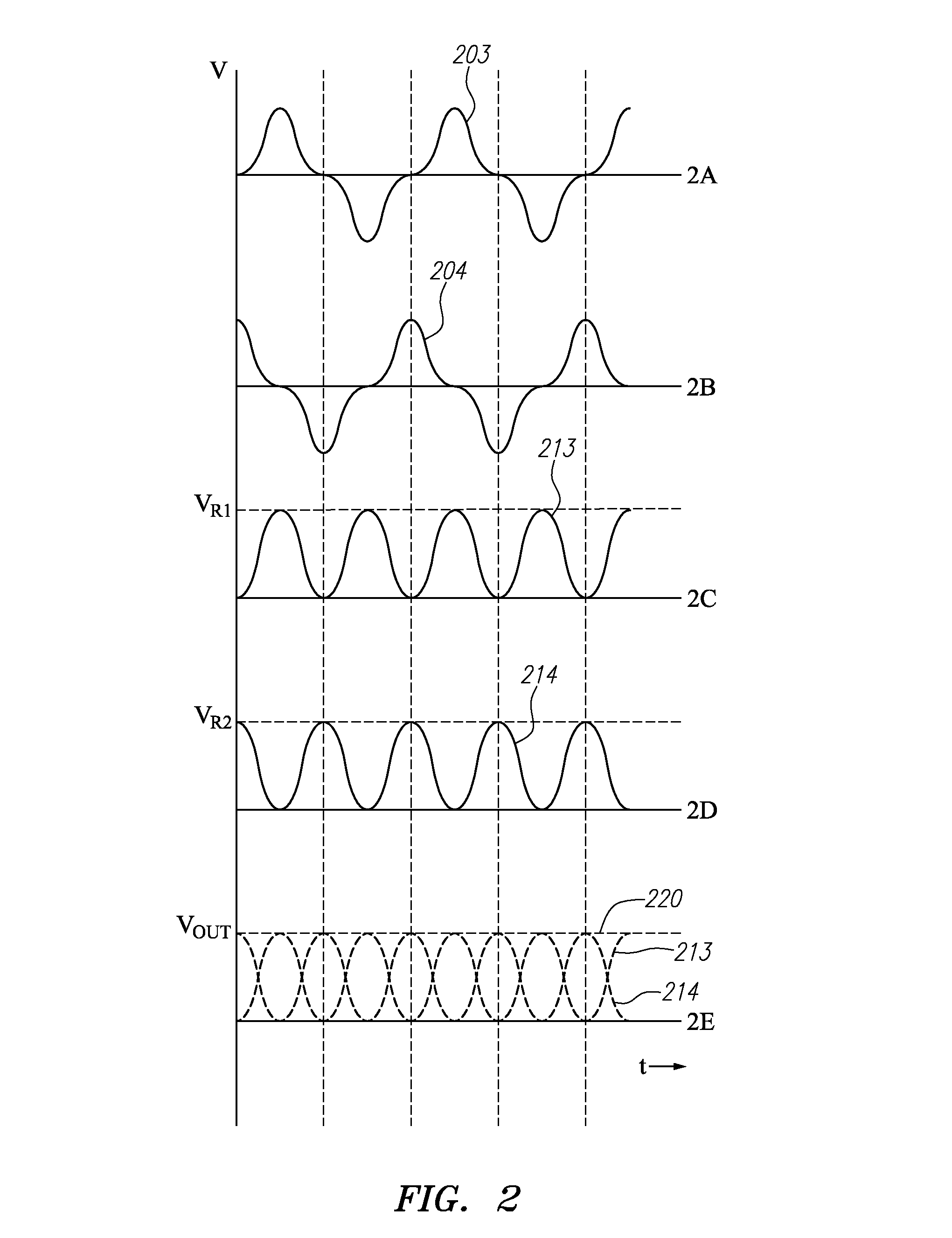Power converter with low ripple output
a power converter and low ripple technology, applied in the direction of dc-ac conversion without reversal, dc source parallel operation, dc network circuit arrangement, etc., can solve the problems of discontinuous rectified voltage, large, heavy, and preponderance of switching power supplies, and achieve low cost, low cost, and low cost
- Summary
- Abstract
- Description
- Claims
- Application Information
AI Technical Summary
Benefits of technology
Problems solved by technology
Method used
Image
Examples
Embodiment Construction
[0041]According to one or more embodiments, a power supply is provided having one or more input waveforms are shaped or otherwise selected prior to being provided to an isolating transformer. The nature of the input waveforms is shaped, selected or otherwise generated so that the transformed waveform requires minimal rectification and / or smoothing for generation of a DC output waveform.
[0042]FIG. 8 is a conceptual block diagram of a power supply 800 as disclosed herein. In FIG. 8, a signal source (waveform) generator 805 generates a pair of complementary waveform signals 823, 824. The complementary waveform signals 823, 824 are selected so as to provide a constant DC output level after being coupled through a level conversion stage 830 to an output (rectification) stage 840 whereupon the level-converted signals are rectified and combined, while minimizing storage / smoothing capacitor requirements in the output stage 840. The complementary waveform signals 823, 824 are preferably of a...
PUM
 Login to View More
Login to View More Abstract
Description
Claims
Application Information
 Login to View More
Login to View More - R&D
- Intellectual Property
- Life Sciences
- Materials
- Tech Scout
- Unparalleled Data Quality
- Higher Quality Content
- 60% Fewer Hallucinations
Browse by: Latest US Patents, China's latest patents, Technical Efficacy Thesaurus, Application Domain, Technology Topic, Popular Technical Reports.
© 2025 PatSnap. All rights reserved.Legal|Privacy policy|Modern Slavery Act Transparency Statement|Sitemap|About US| Contact US: help@patsnap.com



